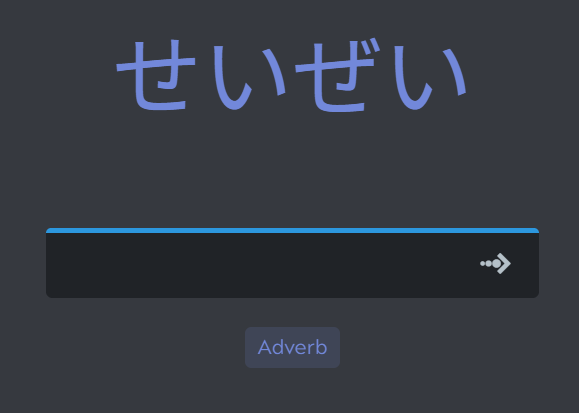I originally posted this as a review to the deck, but seeing that the formatting was utterly destroyed and rendered too difficult to read, I figured I should repost it here. Hope it’s okay that I’m making this thread myself!^^
This is a very thorough deck overall, with most of the vocabulary found in a similar JLPT N2 preparatory book. I know the directions on the deck itself state to use the built in suggest feature to suggest changes, however I think there are a few major structural problems (some that can be easily addressed!) that are both beyond the scope of any particular card and make the deck difficult to use beyond the first 200 or so words. In my objective order of importance (and seemingly ease of addressing), they are:
1. Available Testing Layouts
The biggest issue is with the layouts available, namely that there isn’t an option to quiz Reading -> English. This is an issue for a number of reasons—one of which is my next point—but the most glaring of them is the way the JLPT itself tests vocabulary knowledge. For a number of questions in the first section of the test, the test presents the test taker with a vocabulary word in kana and then asks the test taker to select the most appropriate definition or usage in a sentence. Reviewing only Japanese -> Reading can make this section (and understanding other words throughout the test) particularly difficult because there is no kanji with which to match meaning. If you’re used to seeing 絨毯, it can be difficult to remember and connect じゅうたん with its meaning without access to its kanji. This is made more difficult by the fact that…
2. Nonstandard Kanji Associations
Many cards seem to match vocabulary words with some incredibly rare kanji. Not only too rare to appear on the JLPT N2 itself, but some that you’re unlikely to ever encounter in everyday life in Japan. Since there’s no option to study from the reading, the user has no choice but memorize these rare kanji in order to associate the Japanese word with its English meaning (of course there’s the option to test English -> Japanese, but this isn’t as useful for JLPT prep as testing the opposite direction).
3. Deck Ordering (i.e. large batches of loanwords or onomatopoeia)
I’d assume this is due to the deck being largely programmatically generated, but the order of cards in this deck is often less than helpful towards productive study. At one point, there are nearly 100 katakana words in a row (not including words like 護謨 [ゴム] and 混凝土 [コンクリート] which use rare ateji kanji). In another stretch, there are a number of onomatopoeia and other abstract, similarly sounding (こっそり、うっかり、くしゃみ、そそっかしい) concepts that are extremely difficult to distinguish within the app. These sections can be somewhat mitigated using the function to add cards to the beginning of new lessons, but this process is tedious when repeated two dozen times.
Again, this is an extremely thorough deck and a great resource that would benefit from more options to manipulate and make use of its data. Just wanted to share these thoughts as it’s quite difficult to use right now, but could become very powerful with a few trivial (and not so trivial) edits.






 )
)